Category: AWS Greengrass
AWS Greengrass – Run AWS Lambda Functions on Connected Devices
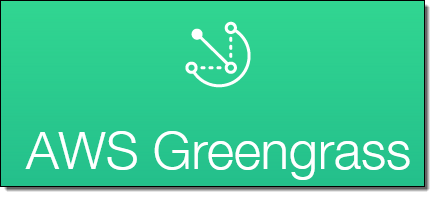 I first told you about AWS Greengrass in the post that I published during re:Invent (AWS Greengrass – Ubiquitous Real-World Computing). We launched a limited preview of Greengrass at that time and invited you to sign up if you were interested.
I first told you about AWS Greengrass in the post that I published during re:Invent (AWS Greengrass – Ubiquitous Real-World Computing). We launched a limited preview of Greengrass at that time and invited you to sign up if you were interested.
As I noted at the time, many AWS customers want to collect and process data out in the field, where connectivity is often slow and sometimes either intermittent or unreliable. Greengrass allows them to extend the AWS programming model to small, simple, field-based devices. It builds on AWS IoT and AWS Lambda, and supports access to the ever-increasing variety of services that are available in the AWS Cloud.
Greengrass gives you access to compute, messaging, data caching, and syncing services that run in the field, and that do not depend on constant, high-bandwidth connectivity to an AWS Region. You can write Lambda functions in Python 2.7 and deploy them to your Greengrass devices from the cloud while using device shadows to maintain state. Your devices and peripherals can talk to each other using local messaging that does not pass through the cloud.
Now Generally Available
Today we are making Greengrass generally available in the US East (Northern Virginia) and US West (Oregon) Regions. During the preview, AWS customers were able to get hands-on experience with Greengrass and to start building applications and businesses around it. I’ll share a few of these early successes later in this post.
The Greengrass Core code runs on each device. It allows you to deploy and run Lambda applications on the device, supports local MQTT messaging across a secure network, and also ensures that conversations between devices and the cloud are made across secure connections. The Greengrass Core also supports secure, over-the-air software updates, including Lambda functions. It includes a message broker, a Lambda runtime, a Thing Shadows implementation, and a deployment agent. Greengrass Core and (optionally) other devices make up a Greengrass Group. The group includes configuration data, the list of devices and the identity of the Greengrass Core, a list of Lambda functions, and a set of subscriptions that define where the messages should go. All of this information is copied to the Greengrass core devices during the deployment process.
Your Lambda functions can use APIs in three distinct SDKs:
AWS SDK for Python – This SDK allows your code to interact with Amazon Simple Storage Service (S3), Amazon DynamoDB, Amazon Simple Queue Service (SQS), and other AWS services.
AWS IoT Device SDK – This SDK (available for Node.js, Python, Java, and C++) helps you to connect your hardware devices to AWS IoT. The C++ SDK has a few extra features including access to the Greengrass Discovery Service and support for root CA downloads.
AWS Greengrass Core SDK – This SDK provides APIs that allow local invocation of other Lambda functions, publish messages, and work with thing shadows.
You can run the Greengrass Core on x86 and ARM devices that have version 4.4.11 (or newer) of the Linux kernel, with the OverlayFS and user namespace features enabled. While most deployments of Greengrass will be targeted at specialized, industrial-grade hardware, you can also run the Greengrass Core on a Raspberry Pi or an EC2 instance for development and test purposes.
For this post, I used a Raspberry Pi attached to a BrickPi, connected to my home network via WiFi:
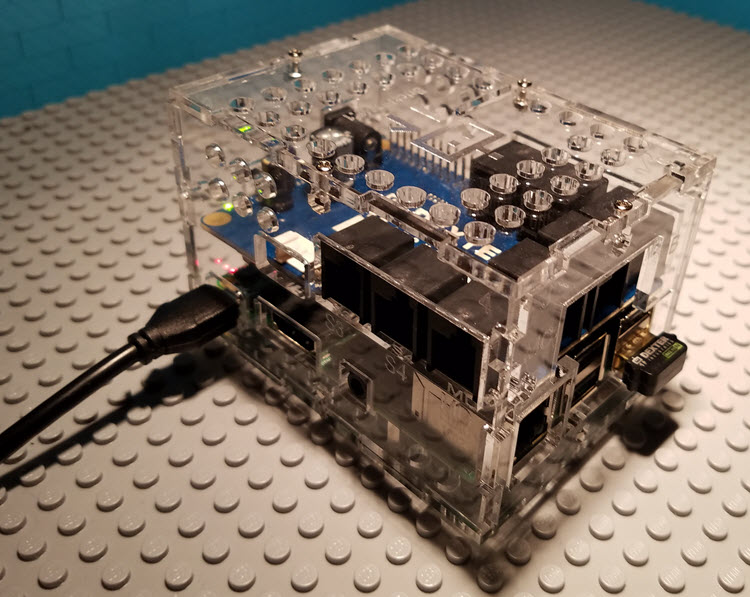
The Raspberry Pi, the BrickPi, the case, and all of the other parts are available in the BrickPi 3 Starter Kit. You will need some Linux command-line expertise and a decent amount of manual dexterity to put all of this together, but if I did it then you surely can.
Greengrass in Action
I can access Greengrass from the Console, API, or CLI. I’ll use the Console. The intro page of the Greengrass Console lets me define groups, add Greengrass Cores, and add devices to my groups:

I click on Get Started and then on Use easy creation:
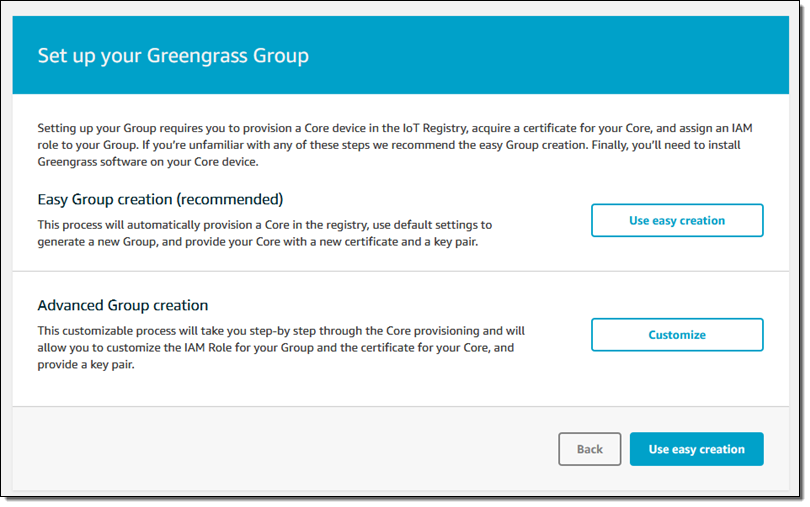
Then I name my group:
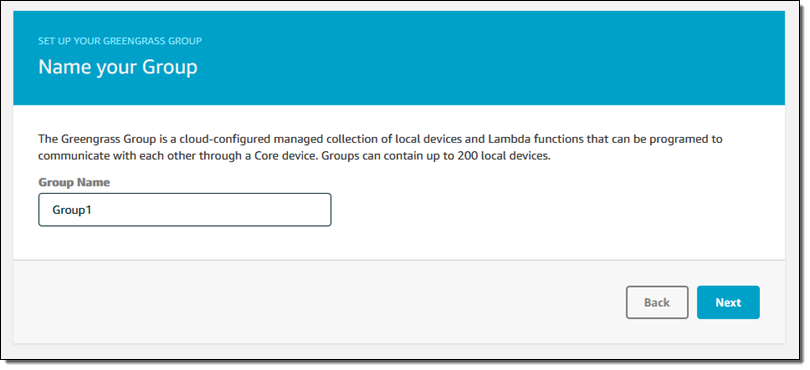
And name my first Greengrass Core:
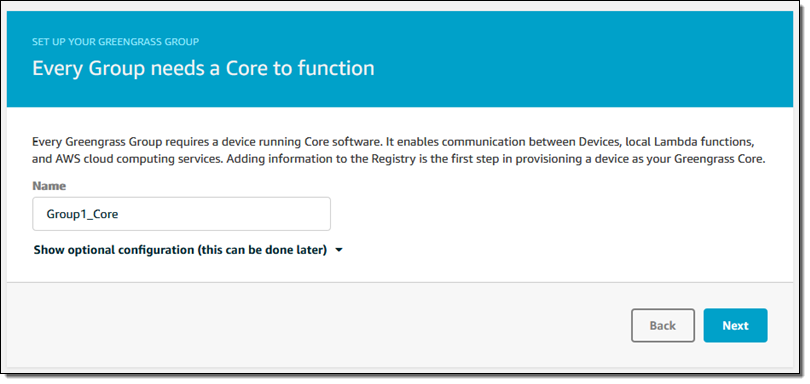
I’m ready to go, so I click on Create Group and Core:
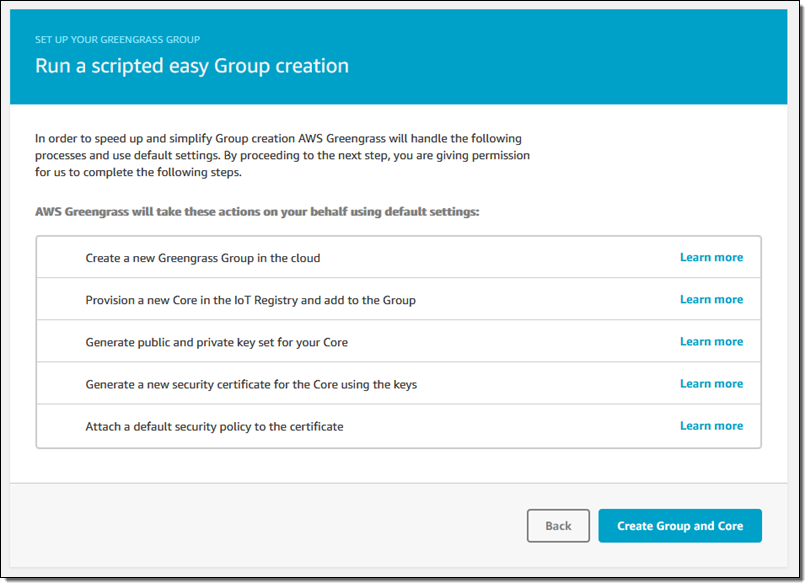
This runs for a few seconds and then offers up my security resources (two keys and a certificate) for downloading, along with the Greengrass Core:
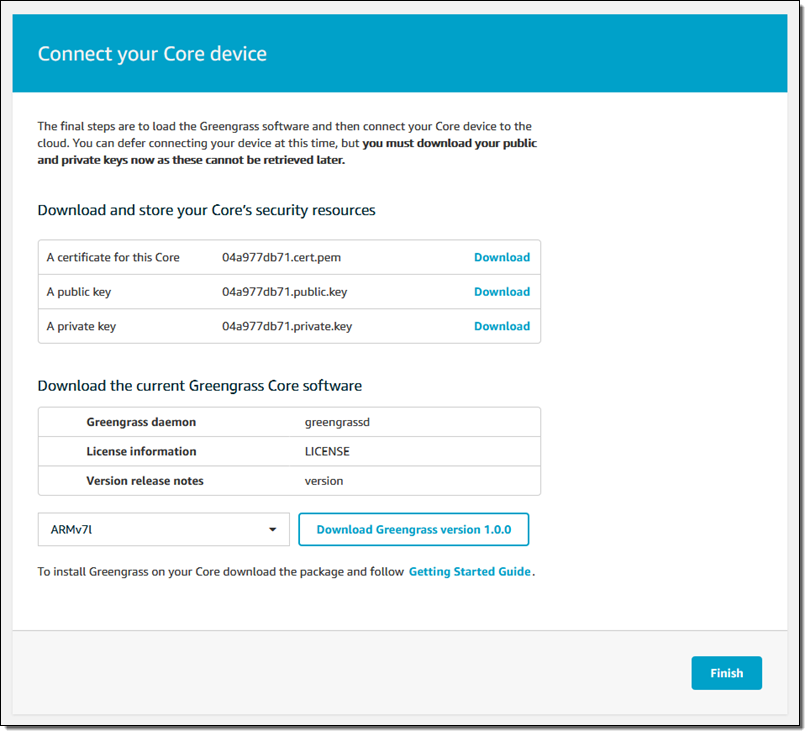
I download the security resources and put them in a safe place, and select and download the desired version of the Greengrass Core software (ARMv7l for my Raspberry Pi), and click on Finish.
Now I power up my Pi, and copy the security resources and the software to it (I put them in an S3 bucket and pulled them down with wget). Here’s my shell history at that point:

Important Update: As one of my sharp-eyed colleagues on the AWS Security team pointed out, this is not a good way to distribute the secrets to the devices. I could have used the AWS CLI to download them from a encrypted bucket, copied them via cut and paste, or used a USB key.
Following the directions in the user guide, I create a new user and group, run the rpi-update script, and install several packages including sqlite3 and openssl. After a couple of reboots, I am ready to proceed!
Next, still following the directions, I untar the Greengrass Core software and move the security resources to their final destination (/greengrass/configuration/certs), giving them generic names along the way. Here’s what the directory looks like:
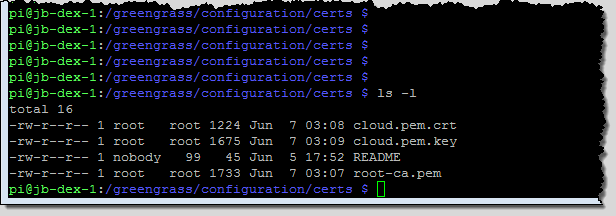
The next step is to associate the core with an AWS IoT thing. I return to the Console, click through the group and the Greengrass Core, and find the Thing ARN:
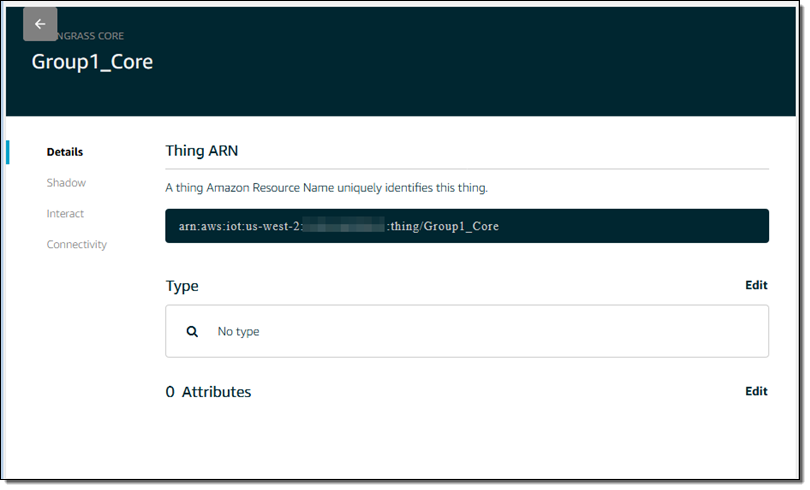
I insert the names of the certificates and the Thing ARN into the config.json file, and also fill in the missing sections of the iotHost and ggHost:
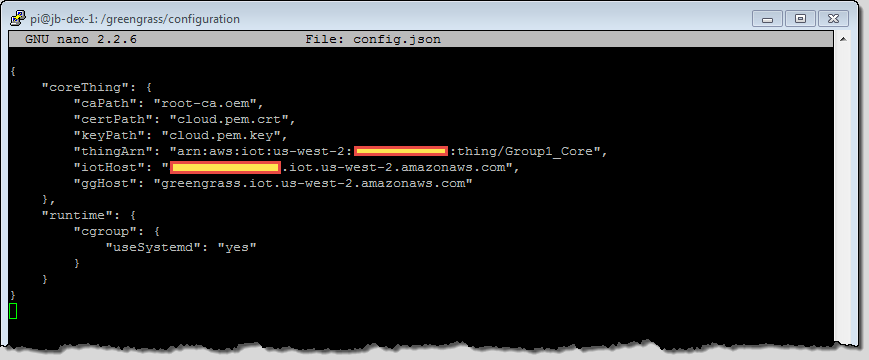
I start the Greengrass demon (this was my second attempt; I had a typo in one of my path names the first time around):
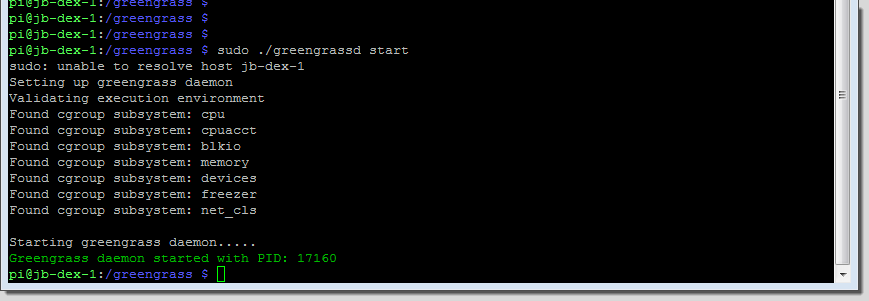
After all of this pleasant time at the command line (taking me back to my Unix v7 and BSD 4.2 days), it is time to go visual once again! I visit my AWS IoT dashboard and see that my Greengrass Core is making connections to IoT:
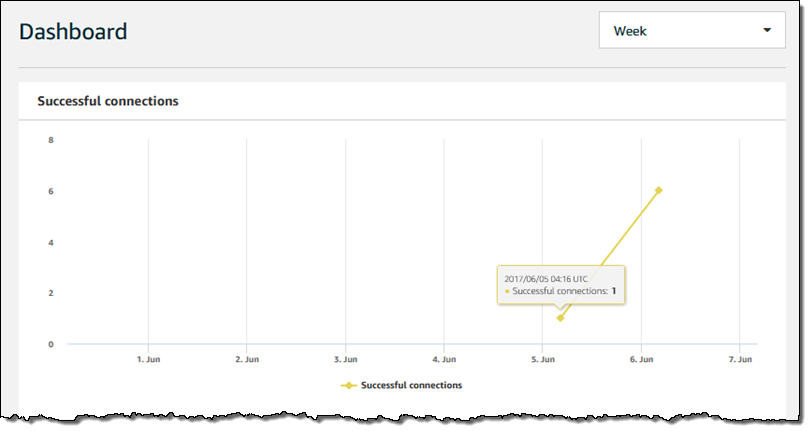
I go to the Lambda Console and create a Lambda function using the Python 2.7 runtime (the IAM role does not matter here):
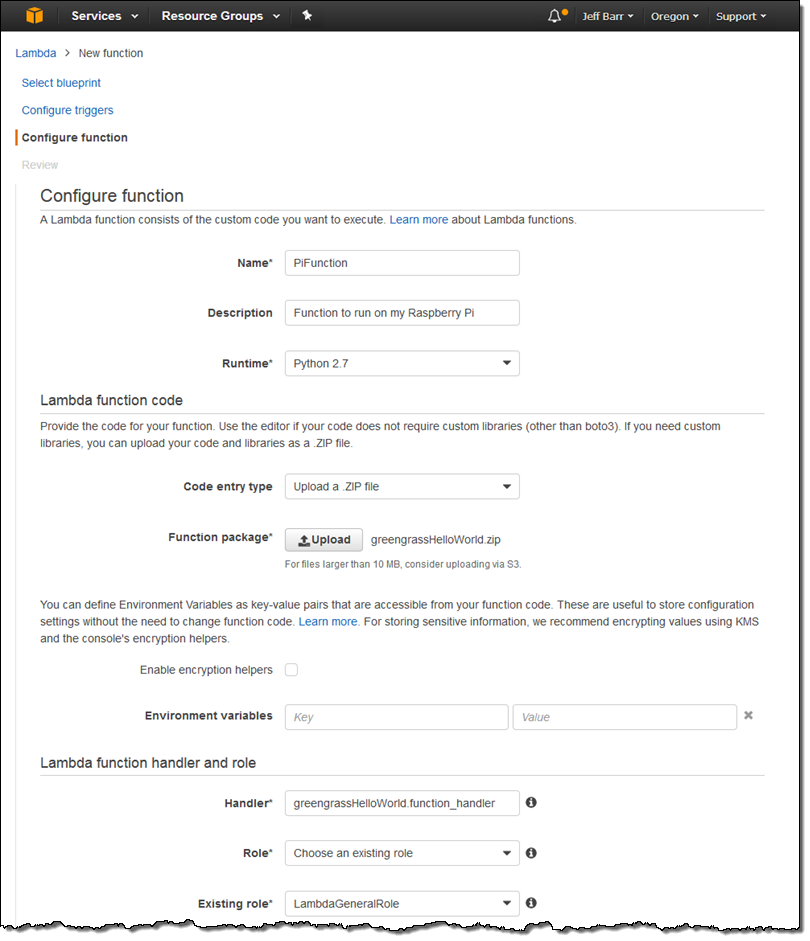
I publish the function in the usual way and, hop over to the Greengrass Console, click on my group, and choose to add a Lambda function:
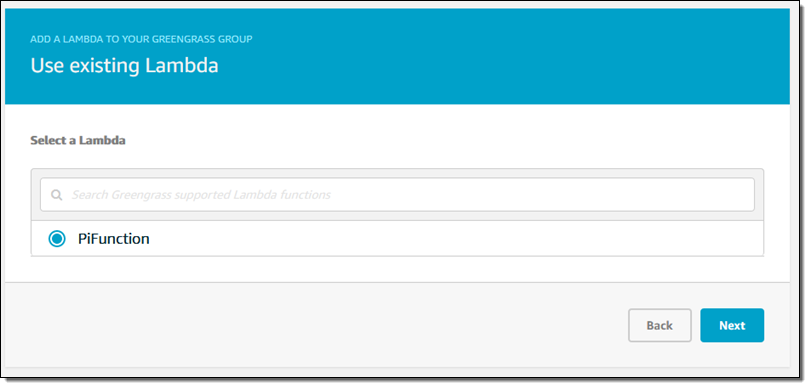
Then I choose the version to deploy:
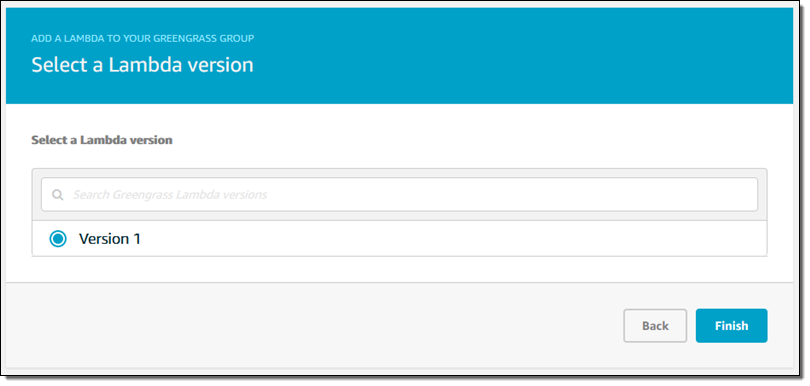
I also configure the function to be long-lived instead of on-demand:
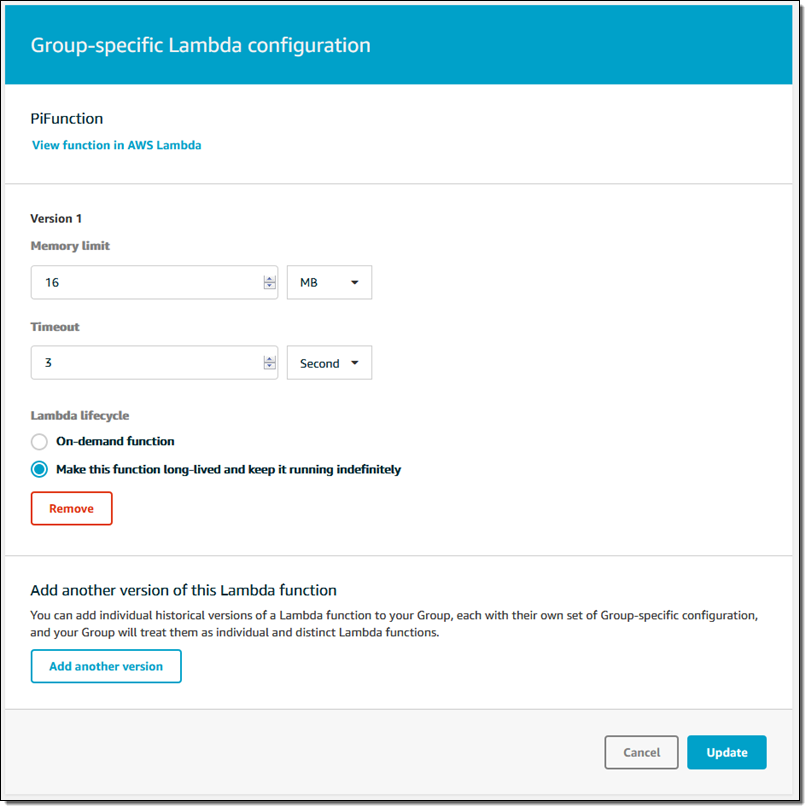
My code will publish messages to AWS IoT, so I create a subscription by specifying the source and destination:
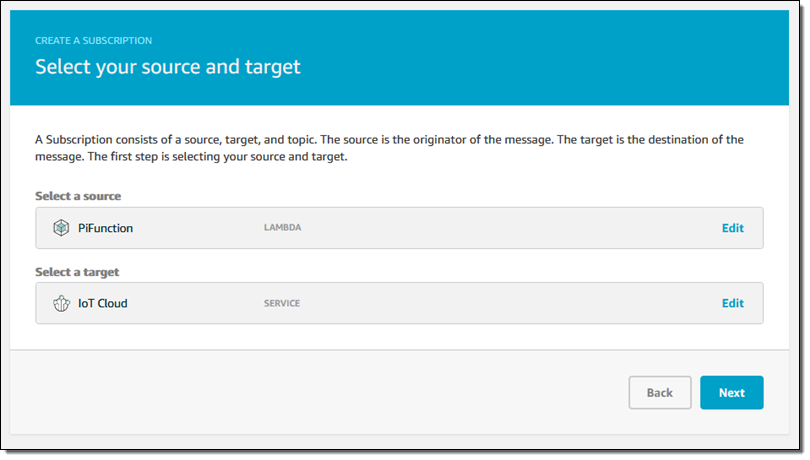
I set up a topic filter (hello/world) on the subscription as well:

I confirm my settings and save my subscription and I am just about ready to deploy my code. I revisit my group, click on Deployments, and choose Deploy from the Actions menu:
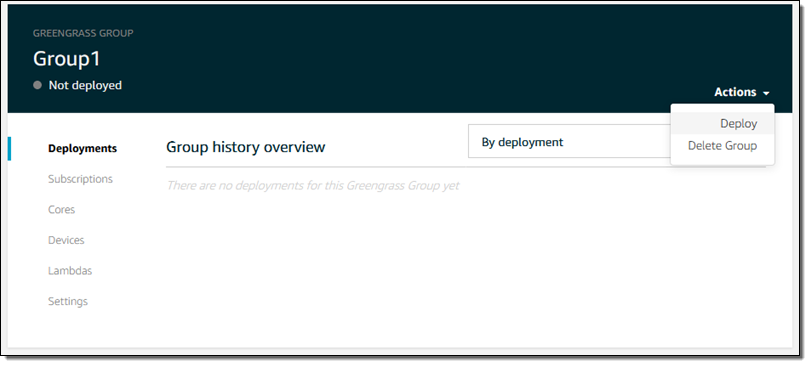
I choose Automatic detection to move forward:

Since this is my first deployment, I need to create a service-level role that gives Greengrass permission to access other AWS services. I simply click on Grant permission:
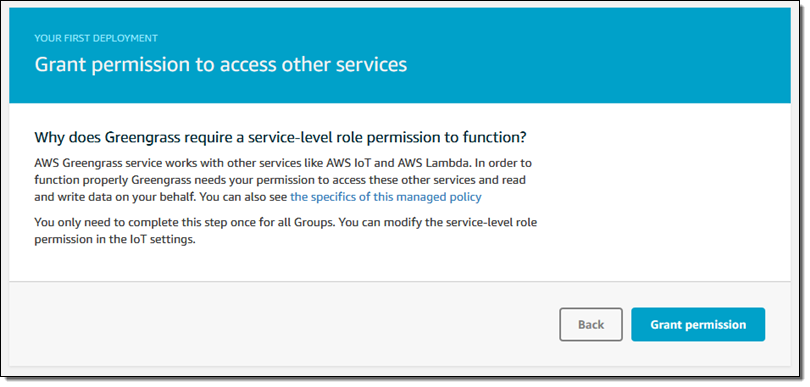
I can see the status of each deployment:
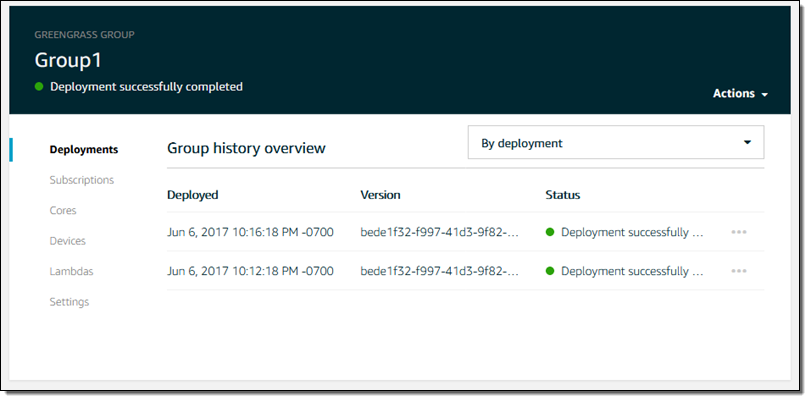
The code is now running on my Pi! It publishes messages to topic hello/world; I can see them by going to the IoT Console, clicking on Test, and subscribing to the topic:
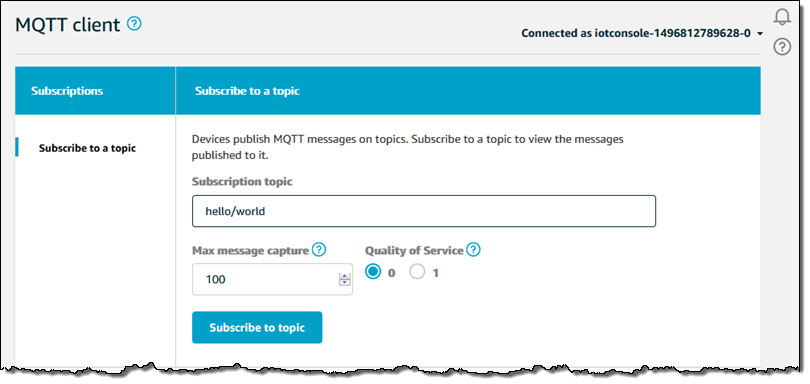
And here are the messages:
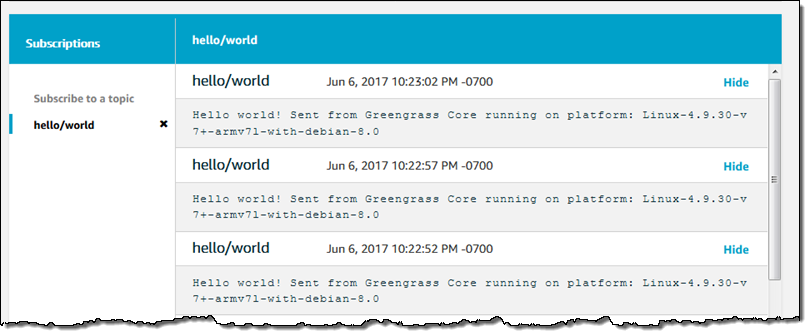
With all of the setup work taken care of, I can do iterative development by uploading, publishing, and deploying new versions of my code. I plan to use the BrickPi to control some LEGO Technic motors and to publish data collected from some sensors. Stay tuned for that post!
Greengrass Pricing
You can run the Greengrass Core on three devices free for one year as part of the AWS Free Tier. At the next level (3 to 10,000 devices) two options are available:
- Pay as You Go – $0.16 per month per device.
- Annual Commitment – $1.49 per year per device, a 17.5% savings.
If you want to run the Greengrass Core on more than 10,000 devices or make a longer commitment, please get in touch with us; details on all pricing models are on the Greengrass Pricing page.
— Jeff;
AWS Greengrass – Ubiquitous, Real-World Computing
Computing and data processing within the confines of a data center or office is easy. You can generally count on good connectivity and a steady supply of electricity, and you have access to as much on-premises or cloud-based storage and compute power as you need. The situation is much different out in the real world. Connectivity can be intermittent, unreliable, and limited in speed and scale. Power is at a premium, putting limits on how much storage and compute power can be brought in to play.
Lots of interesting and potentially valuable data is present out in the field, if only it could be collected, processed, and turned into actionable intelligence. This data could be located miles below the surface of the Earth in a mine or an oil well, in a sensitive & safety-critical location like a hospital or a factory, or even on another planet (hello, Curiosity).
Our customers are asking for a way to use the scale and power of the AWS Cloud to help them to do local processing under these trying conditions. First, they want to build systems that measure, sense, and act upon the data locally. Then they want to bring cloud-like, local intelligence to bear on the data, implementing local actions that are interdependent and coordinated. To make this even more challenging they want to make use of any available local processing and storage resources, while also connecting to specialized sensors and peripherals.
Introducing AWS Greengrass
I’d like to tell you about AWS Greengrass. This new service is designed to allow you to address the challenges that I outlined above by extending the AWS programming model to small, simple, field-based devices.
Greengrass builds on AWS IoT and AWS Lambda, and can also access other AWS services. it is built for offline operation and greatly simplifies the implementation of local processing. Code running in the field can collect, filter, and aggregate freshly collected data and then push it up to the cloud for long-term storage and further aggregation. Further, code running in the field can also take action very quickly, even in cases where connectivity to the cloud is temporarily unavailable.
If you are already developing embedded systems for small devices, you will now be able to make use of modern, cloud-aware development tools and workflows. You can write and test your code in the cloud and then deploy it locally. You can write Python code that responds to device events and you can make use of MQTT-based pub/sub messaging for communication.
Greengrass has two constituent parts, the Greengrass Core (GGC) and the IoT Device SDK. Both of these components run on your own hardware, out in the field.
Greengrass Core is designed to run on devices that have at least 128 MB of memory and an x86 or ARM CPU running at 1 GHz or better, and can take advantage of additional resources if available. It runs Lambda functions locally, interacts with the AWS Cloud, manages security & authentication, and communicates with the other devices under its purview.
The IoT Device SDK is used to build the applications that run on the devices that connect to the device that hosts the core (generally via a LAN or other local connection). These applications will capture data from sensors, subscribe to MQTT topics, and use AWS IoT device shadows to store and retrieve state information.
Using AWS GreenGrass
You will be able to set up and manage many aspects of Greengrass through the AWS Management Console, the AWS APIs, and the AWS Command Line Interface (CLI).
You will be able to register new hub devices, configure the desired set of Lambda functions, and create a deployment package for delivery to the device. From there, you will associate the lightweight devices with the hub.
Now in Preview
We are launching a limited preview of AWS Greengrass today and you can sign up now if you would like to participate.
Each AWS customer will be able to use up 3 devices for one year at no charge. Beyond that, the monthly cost for each active Greengrass Core is $0.16 ($1.49 per year) for up to 10,000 devices.
We have a webinar for you if you’d like to learn more. It is on January 19th and you can sign up for it here.
— Jeff;